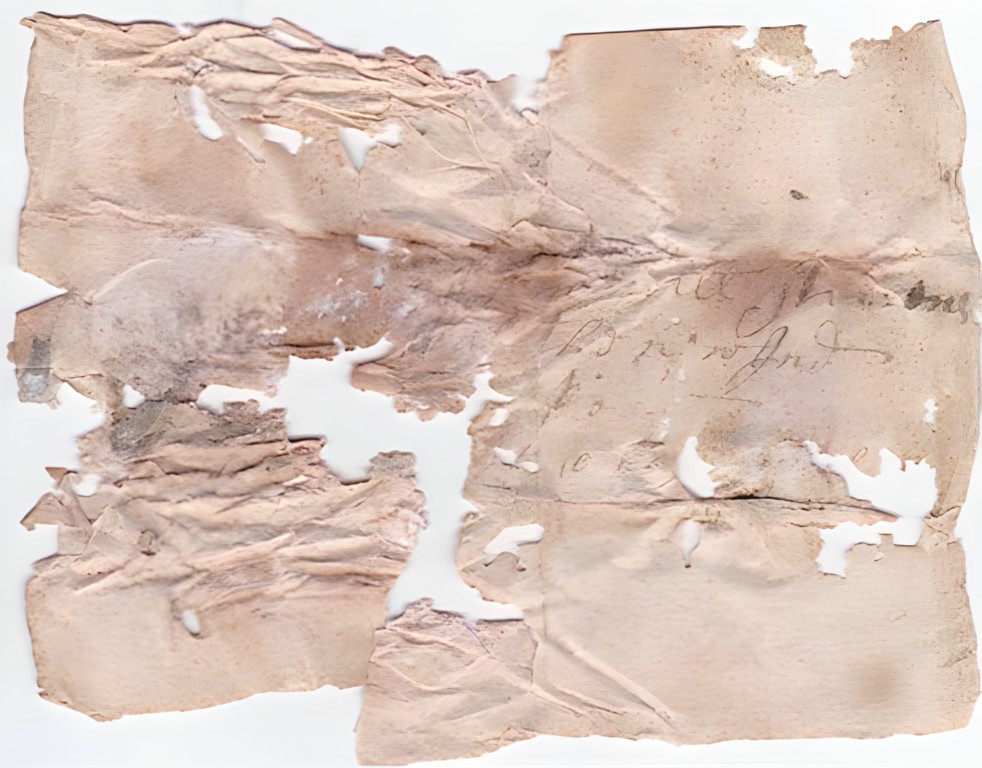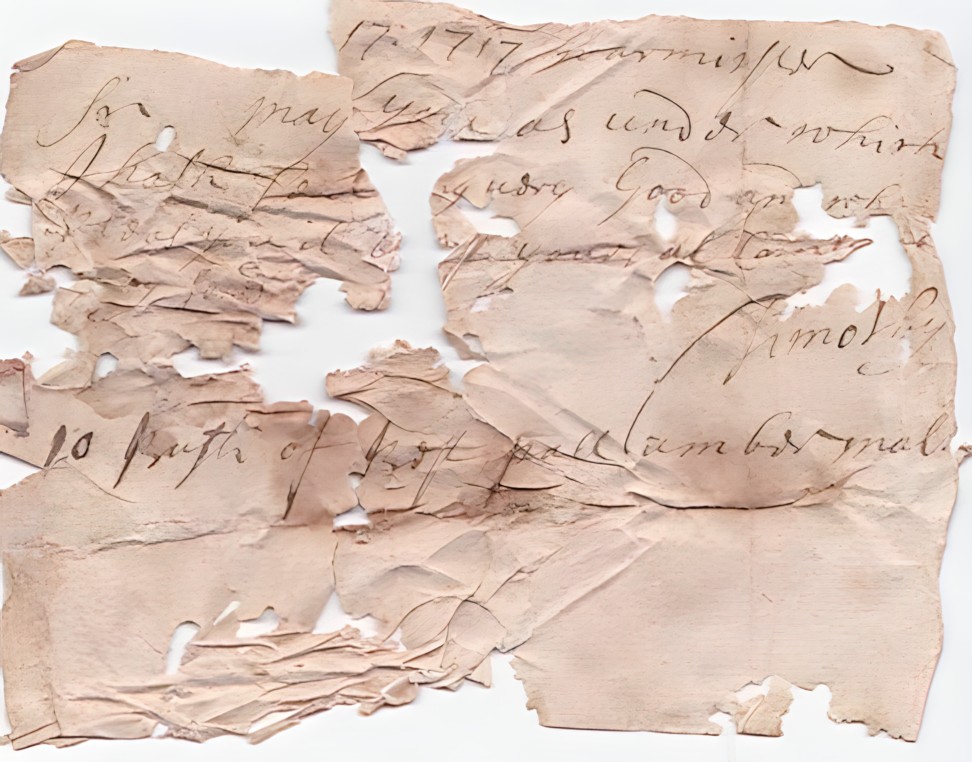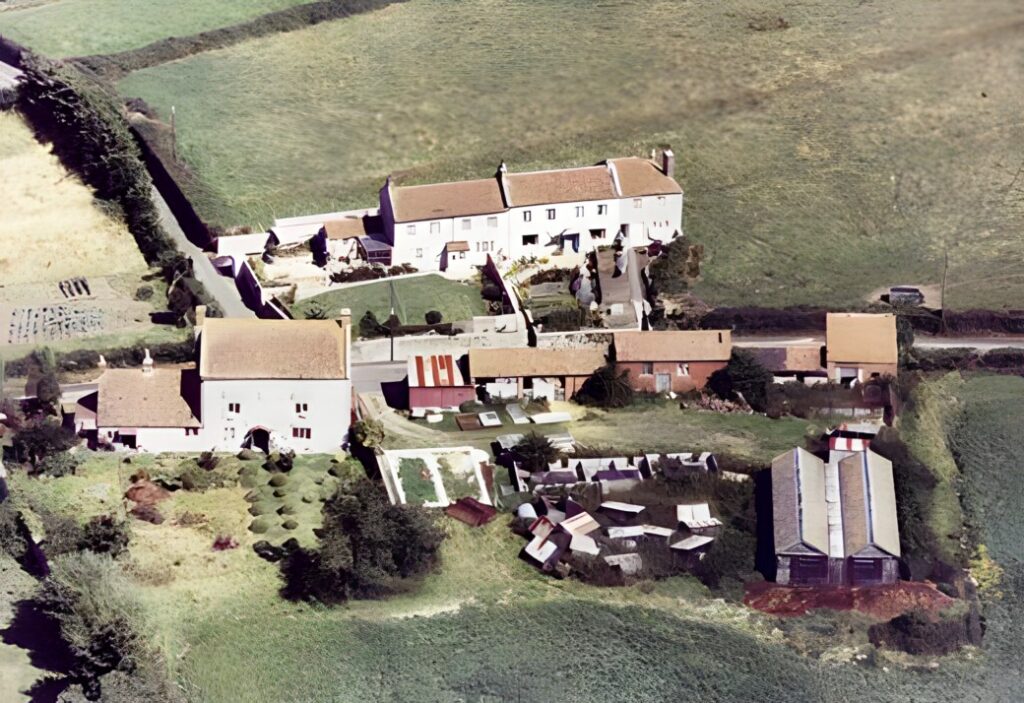1, 3 and 5 Church Lane make up a group of Almshouses which the Listed Buildings record estimates to have been built in the 18th century. No. 1 has a date stone inscribed “HBL 1755”. No. 3 (which appears to have been built before no. 1) has a stone above the door inscribed “WH” but the detail is decayed. No. 5, which appears to have been built at the same time as no. 3, has a stone inscribed “WH” with the heraldic shield of Sir Walter Hungerford, Lord of the Manor, who died in 1596 (see left-hand image, below). The worn-out circular plaque above the door of no. 3 may have been like the Hungerford coats of arms (see right-hand image, below).


These cottages were used to house brewery workers after the brewery was built. Apparently this end of Church Lane was often called Park Street.
2 Church Lane (Black Swan Cottage) used to be an inn known as The Swan and the property was connected with the Cary family. According to Mr. H. Hopkins, the swan was their badge, and their coat of arms was on the outer wall of the house in 1932. The resident believes that in the 1650s, the property was made up of two separate cottages.
On maps for the late 1800s, the two cottages had been made into one and there were also additional buildings that are no longer there. When recent owner, Martin Mc Cleave, was restoring the cottage, he found a very old piece of paper stuck in a hole in a ceiling beam. It turned out to be a delivery note made out to William Stevens at the New Inn for 10 bushels of best pale amber malt, dated 17 May, 1717 (see below).


In the Alehouse Recognizance records in the Somerset Record Office, William Stevens, the elder and/or William Stevens, the Younger were mentioned from 1733 until 1753. They were landlords of the New Inn, an early name for the White Hart Inn (see comments on 38 High Street). By 1839, the property was described as “house, cottage and garden” and it was owned by William Wheeler and occupied by John Huntley. In the year 1899, a four year old boy was drowning in a well in the garden. Thomas Morris lowered himself down into the well—feet on one side and shoulders on the other and he eventually succeeded in rescuing the child from drowning. Thomas Morris was later awarded the Bronze Medal for his bravery at a ceremony in the “Reading Rooms”. At one time, a large park known as the Green Park extended from Seymour’s Court into Rode. There was a large gateway to it on the left of the Black Swan. The censuses from 1841 to 1891 describe over 12 dwelling as being ‘Black Swan Cottages’.
[An extract from “A History of Brewing in Rode” by Sidney Fussell and Brian Foyston, 2006 notes that “What is now the High Street end of Church Lane has in the past long been referred to as “Black Swan” and 2 Church Lane (“Black Swan Cottage”) was referred to as the “Swan Inn”. During restoration work a delivery note for pale amber malt was found there, supporting the view that this was a ‘home-brewed house’, like so many of its contemporaries. Interestingly enough the pub name “Black Swan”, often corrupted to “Mucky Duck” by sailors, was in common use in England some time before that beautiful Australian water bird was brought to this country.”]
7 Church Lane is listed as mid-19th century and, according to Paul Stacey, it is an addition made by the Rode builder, Edward Silcocks. However, it has none of the signs of a Silcocks’ house.
12 Church Lane. The house is 17th century with late 18th century alterations. There is some evidence that in the early 1770s Benjamin Hawkins, inn keeper at the Cross Keys and church warden, had a life tenancy of the property from Lord of the Manor, Edward Andrews. This tenancy was passed to his daughter Elizabeth in 1773, who married John Thomas in 1778. By 1839 it was called Elm Cottage and the Thomas’ daughters Ann, Charlotte and Harriet owned and occupied it.
From 1856 to after 1883, John Keen owned the house, garden and land. In 1862, he was occupying the property but by 1866, James Perks was living here. (In 1872, John Keen, man of independent means, was found guilty of stealing a fowl. As he had two previous convictions against him, he was sentenced to 7 years penal servitude and 5 years subsequent supervision.) In 1899, the Edgell family sold to Mrs. Eliza Chislett and the house was then called Rose Cottage. In 1912 she sold to Sidney Fussell and the name was changed back to Elm Cottage. In 1919, Mrs. Sidney Fussell lived at Elm Cottage and she lived here until she died in 1932. After that Ethel Minnie Fussell (daughter of Sidney and Hannah Fussell) lived in the house and she was here at least until 1958.
29, 31, and 33 Church Lane make up a grouping called Newtown. There is a date stone on the front of no. 29 with the inscription J.W. 1806 NEWTOWN. In August of that year, the land containing an old house was bought by Agur Baverstock, a builder. He demolished the old house and built a terrace of five new cottages, with the western most abutting Nutts Lane. He sold these in 1813 to John Wheeler. By 1835 they had been converted to eight cottages, which were all bought by Francis Theodosius Clark. By 1861, the first five cottages were owned by Thomas Middleton of Woolverton, mason and the other three were owned by William Matthews.
In December 1875 Henry James Noad bought the group of five cottages at the Nutts Lane end. At some time after this several of the cottages were combined to make five dwellings. By 1931 Arnold John Noad, son of Henry James, owned most of these, which were occupied by Joseph Garrett, Arthur Jupp, Fred Moore, George Francis, Fred Francis and Miss Frere. In 1963 two cottages at the Nutts lane end were demolished and the occupants moved to new houses in the Mead. (Thanks to Graham and Jill Noad for this information).

39 Church Lane (Woodbine Cottage). Although marked on the 1839 map, it is not described. Joseph Ford Walker was living here in 1851 with his wife, Sarah, and daughters, Ellen, and Emma. Ellen, who was only 18, and her mother were teachers at the Rode Hill National School. Also in the house were Joseph’s father-in-law, Joseph Rose, and sister-in-law, Ann Noad Rose. The former had been married to Ann Noad, eldest daughter of wealthy cloth merchant Jonathan Noad of Rockabella.